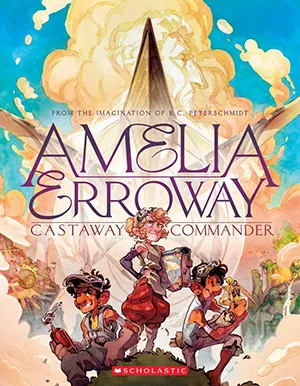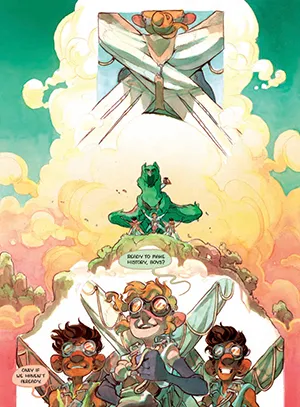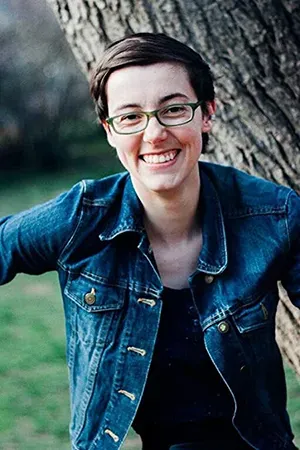Even by the standards of the Artist's Alley at last year's Emerald City Comic-Con, B.C. Peterschmidt's booth was bustling. Copies of their debut graphic novel, Amelia Erroway: Castaway Commander, had sold out in the first 48 hours of the convention. Their commissions were full, and their prints were scarce.
Approaching the booth revealed why: Erroway is rendered in vivid watercolor, with a charming style and a depth of design and composition that might invite a reader to pause in their page-turning and daydream over the details of each panel.

According to Peterschmidt, their journey with Erroway began in the mid-'90s, when they visited the Smithsonian National Air and Space Museum in Washington, DC. "I can trace it back to that moment," they said in a Zoom call; the planes and shuttles hanging from the ceiling got the gears of the project turning.
Growing up in a family of scientists was also a big factor in the creation of Erroway, Peterschmidt said, and in their growth as an artist. Family movie nights in their house featured the likes of Apollo 13, Contact, and the teachings of science educators Carl Sagan and Neil deGrasse Tyson.
Part of the magnetism of Erroway, then, might come from Peterschmidt's attention to real engineering in designing the flying machines central to the graphic novel's setting. "While I can't say for sure that the Intrepyd Ray would be able to fly," they wrote in their author's note, "it's fashioned on sound engineering principles, and I even built prototypes to make sure that what I conjured held some basis in reality."

Unfortunately, part of reality also includes marketing. Peterschmidt said that it was tough keeping Erroway from being marketed toward just boys or just girls. "I wanted this story to appeal to everyone," they said of the matter. And they had to "pull some teeth" to get the novel placed in the nongendered "children's fantasy" category.
A big theme of Erroway, after all, is the need to defy labels and expectations. "I wanted to kind of gracefully dance along this beautiful edge of the androgynousness between magic and science," Peterschmidt said. "There's this beautiful world that exists between the binary."
The feathered dragons of Erroway's setting exemplify this theme well. As the flying machines are based in engineering, Peterschmidt consulted a veterinary technician while designing the novel's creatures, incorporating details like feather color to denote a dragon's age. Dragons have deep roots in the fantasy genre, yet making their anatomy more "scientific" doesn't take away from the wonder they often inspire.
Of their own view of storytelling, Peterschmidt compared it to "building a puzzle," and this also comes through in the panels of Erroway. One readthrough isn't enough to find all of its visual Easter eggs of meaning, which are made up of visual metaphors and background details, some placed among page-spanning schematics.
As for future projects, Peterschmidt said they couldn't mention specifics, but they insisted that the energy that had gone into Erroway for so much of their life was already finding other channels.


